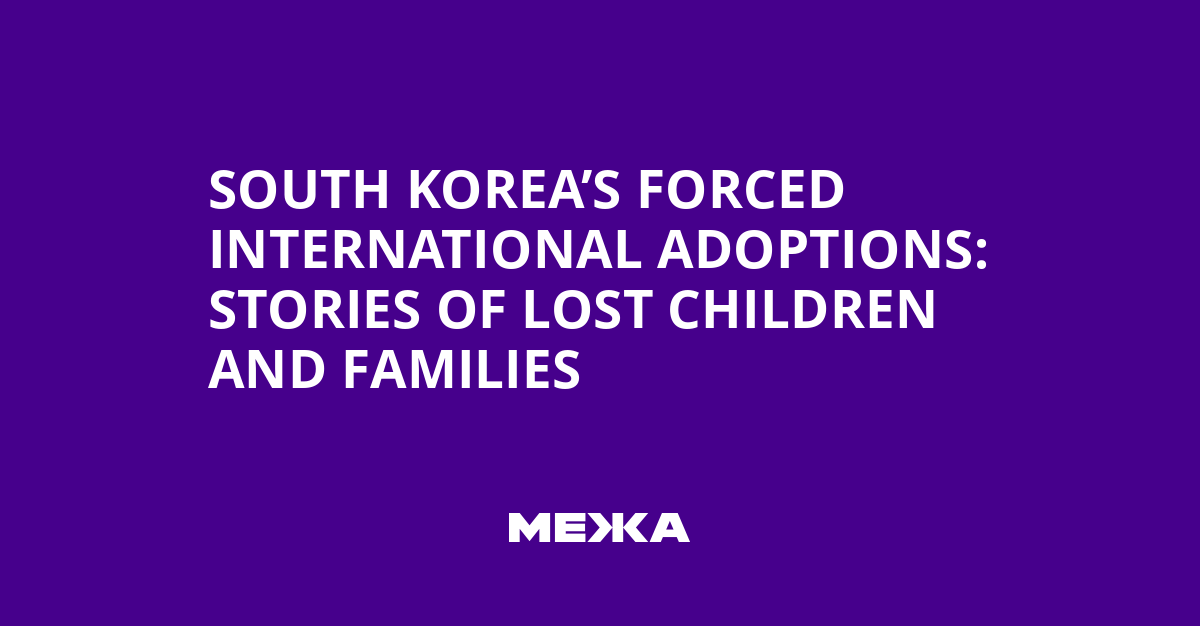Marianne Ok Nielsen never dreamed of having children or her own family. She often told friends that she didn’t deserve such a life.
For most of her 52 years, she believed her parents had abandoned her as a baby; in 1973, police found her on the street in Daejeon, South Korea, about 90 miles south of Seoul.
“I was thrown away like trash. Nobody wanted me… That’s who I was,”
– Nielsen
Her Danish adoptive mother, who passed away last year, once said that her biological mother probably “gave her up out of love,” as she couldn’t afford to raise a child.
This story may have been meant to comfort, but in reality, it concealed a lucrative business of “mass exporting” children – some with fake names and birthdates – to foreign parents in at least 11 countries, according to this year’s South Korean Truth and Reconciliation Commission.
The commission found that over 141,000 Korean children were sent abroad between the 1950s and 1990s, mostly to the US and Europe. In a society that condemned single mothers, some women were forced to give up their children soon after birth, while others mourned stolen children.
Han Tae-soon, 73, still remembers the laughter of her 4-year-old daughter playing with friends near their home in Jeonju, South Korea, in 1975.
“I went to the market and left Kyung-ha with a few of her friends. When I came back, my daughter was gone.”
– Han Tae-soon
Han, who was 22 at the time, did not see Kyung-ha again for decades. Nielsen, searching for her family under similar circumstances, also finally met the mother she thought had abandoned her.
After a long separation, the cruelty of foreign adoptions in South Korea is only now becoming clear, as children and mothers try to overcome language and cultural barriers.
Han’s daughter now lives in America. In Nielsen’s case, time and age have robbed her mother of any memories of her.
False Abandonment
Growing up in the small Danish town of Gedved, Nielsen aspired to be “more Danish than the Danes themselves.”
“I avoided looking at myself in the mirror because I tried so hard to be white – to convince everyone that I was white.”
– Nielsen
She never questioned her origins until one day the son of the man she was dating asked where her biological mother was.
In 2016, Nielsen took a DNA test through the American organization 325Kamra, which helps Korean adoptees find their families.
After many years of fruitless searching, last May she received a message about a possible family match – her older brother had registered his DNA with the Korean police, looking for a sister.
“For 51 years I believed I was abandoned on the street, that I was an orphan. I never imagined I had a family, and that they were looking for me.”
– Nielsen
When Han’s daughter disappeared, the family searched watermelon fields near their home, fearing the child might have gotten lost or drowned.
Han went to the police every day but was advised to consult fortune-tellers.
In 1981, she opened a hair salon in Anyang and hung an old photo of Kyung-ha on the mirror for customers to see.
In 1990, she appeared on a TV show, which led to a tip – a 20-year-old woman claimed to be Kyung-ha. But two years later, it turned out to be a lie.
Han turned to 325Kamra for a DNA test and found her real daughter, who now lives in the US under the name Lori Bender.
Consequences and the Fight for Truth
Han never thought to search for her daughter outside South Korea, as she couldn’t imagine she might have been adopted abroad.
She blames the authorities for kidnapping and selling the child, as well as for forced adoptions.
“I want to reveal the truth. Why? Because the government stole children and sold them.”
– Han Tae-soon
Last October, Han filed a lawsuit against the government, an orphanage, and the largest adoption agency, Holt Children’s Services, for wrongful adoption. The court hearing is scheduled for September.
Nielsen, meanwhile, is trying to overcome the language barrier with her mother, who suffers from dementia and does not remember her.
She is learning Korean to at least express some of her feelings and support her ailing mother.
“Losing the language is a huge loss because language is the door to culture. The intimacy of communicating with my mom has completely disappeared.”
– Nielsen
Nielsen remembers the first night she slept next to her biological mother:
“I barely slept. I just looked at her and felt: ‘This is my mom.’ Without any doubt.”
– Nielsen
